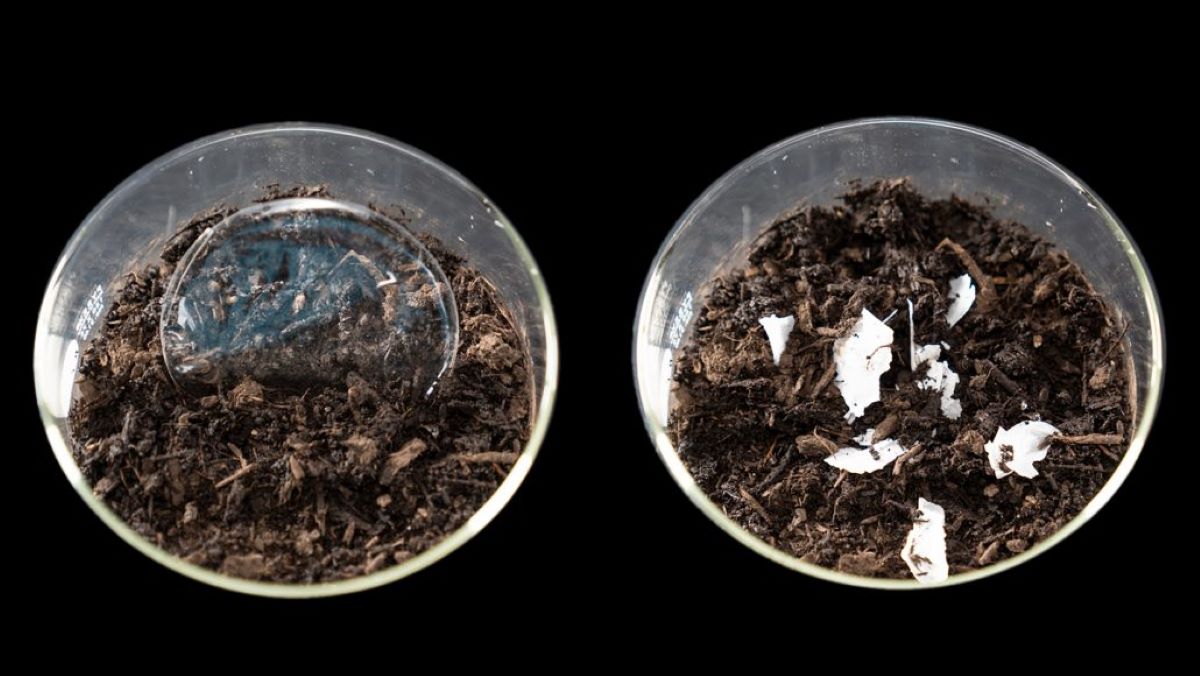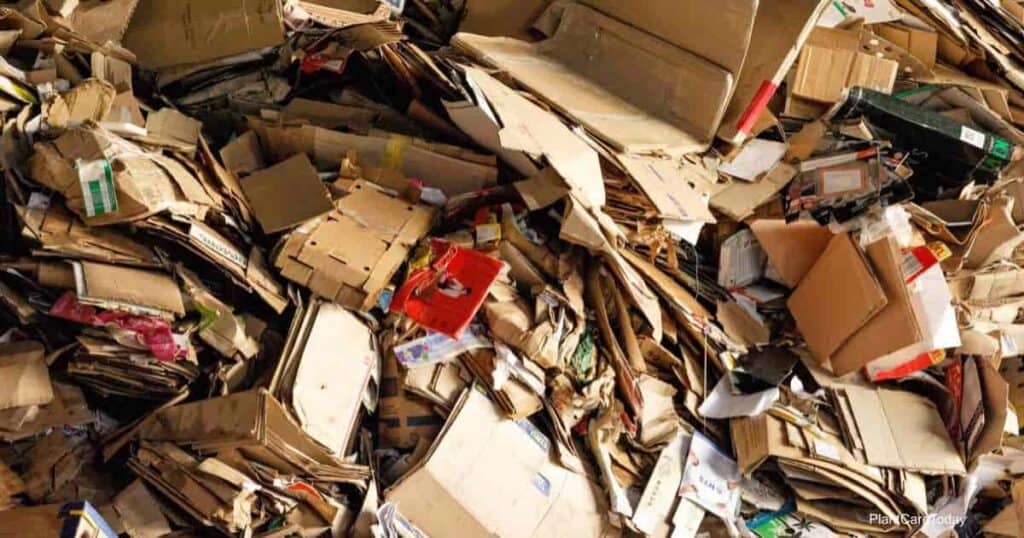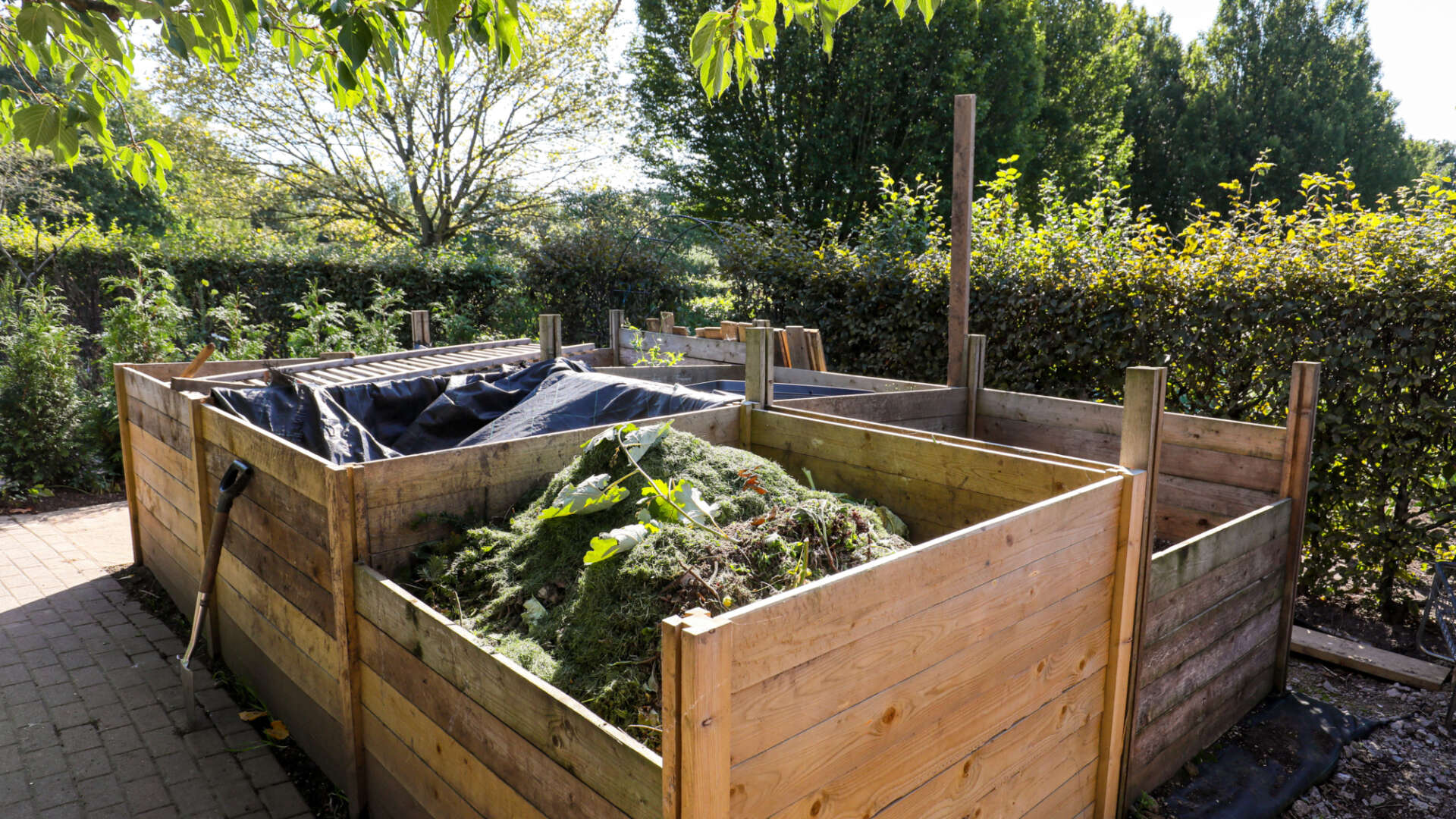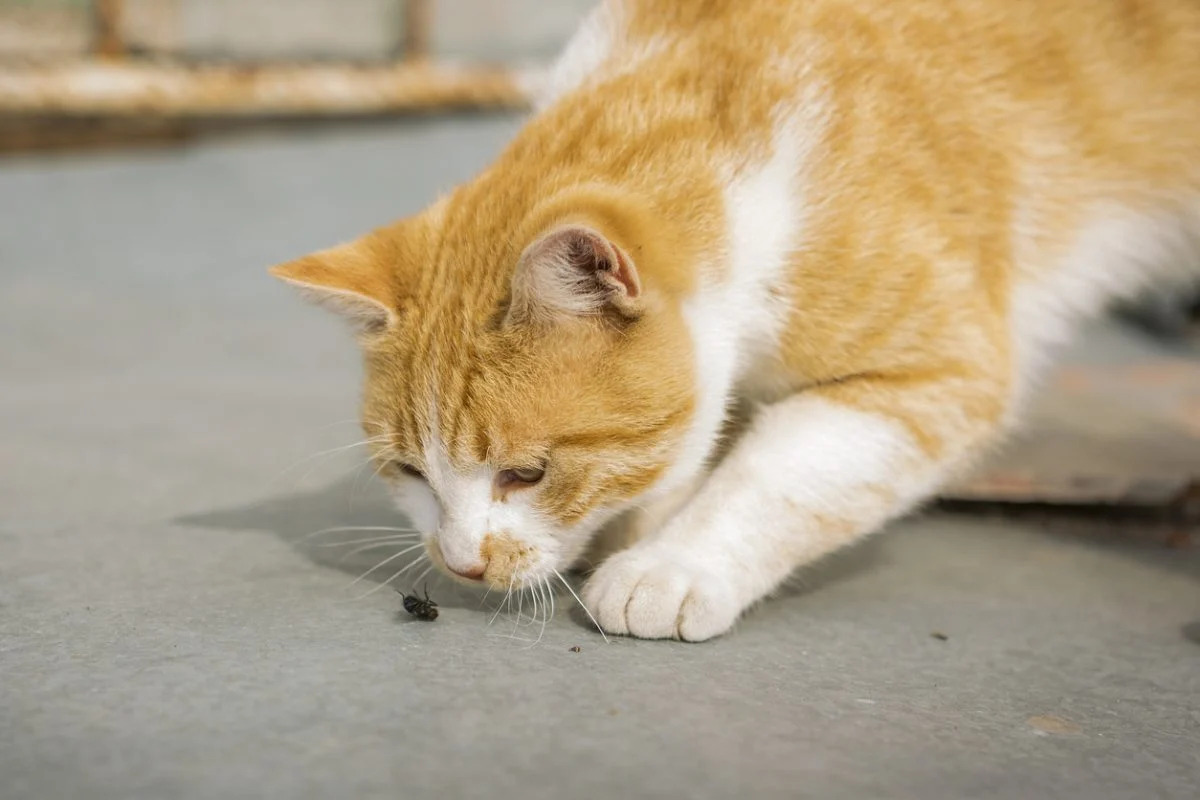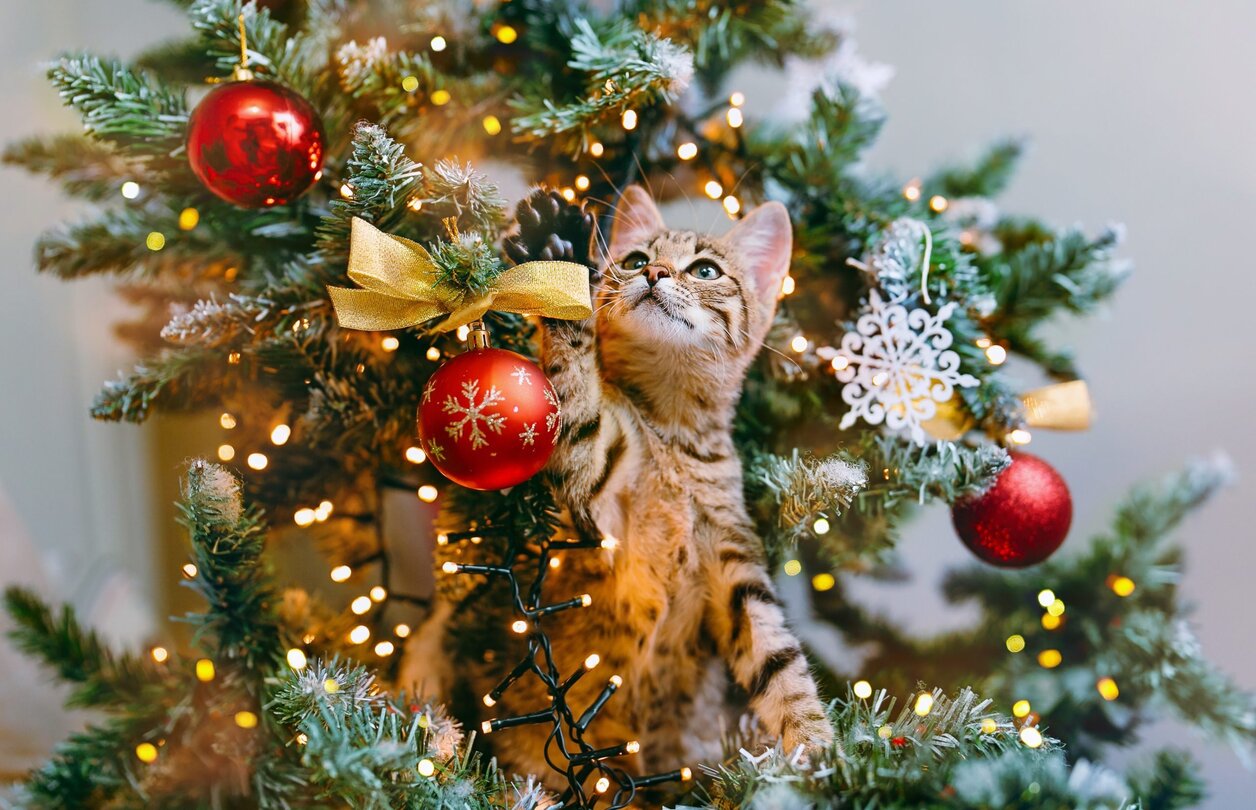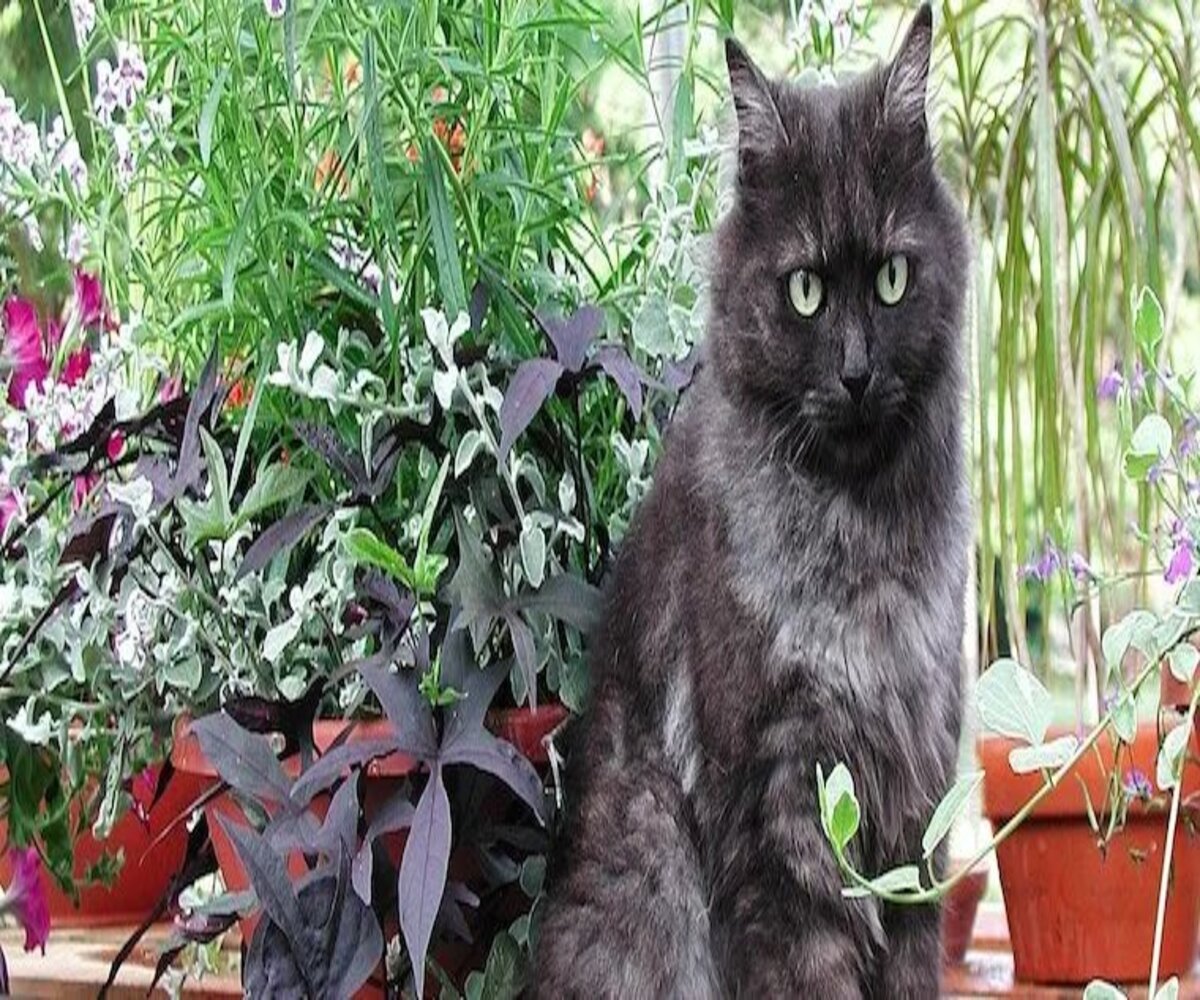Home>Gardening Tips and Tricks>How To Compost Cat Litter


Gardening Tips and Tricks
How To Compost Cat Litter
Modified: February 9, 2024
Learn how to solve the problem of composting cat litter
(Many of the links in this article redirect to a specific reviewed product. Your purchase of these products through affiliate links helps to generate commission for Chicagolandgardening.com, at no extra cost. Learn more)
Table of Contents
Introduction
Welcome to the world of composting cat litter! If you’re a cat owner looking for an eco-friendly and sustainable way to dispose of your furry friend’s waste, then composting is a fantastic solution. Composting not only helps reduce landfill waste and its environmental impact but also provides nutrient-rich soil that can be used in your garden.
Composting cat litter may seem like a daunting task, but with the right knowledge and a little effort, you can effectively manage your cat’s waste while contributing to a healthier planet. In this article, we will guide you through the process of composting cat litter, step by step.
Before we dive into the details, it’s important to note that not all cat litter is suitable for composting. Traditional clay-based litters, for example, should never be composted as they contain harmful chemicals that can harm plants and contaminate the soil. However, there are environmentally-friendly alternatives available such as natural plant-based litters or those made from recycled materials that are safe for composting.
In the following sections, we will discuss the benefits of composting cat litter, the types of litter suitable for composting, how to prepare your composting area, the steps involved in composting cat litter, tips for monitoring and maintaining the compost, and finally, how to utilize the finished compost effectively.
By the end of this article, you will have the necessary information and confidence to start composting your cat’s litter, making a positive impact on the environment and reaping the benefits of nutrient-rich compost for your plants. Let’s get started!
Benefits of Composting Cat Litter
Composting cat litter offers a range of benefits, both for the environment and for your gardening endeavors. Let’s explore these benefits:
- Reduced Environmental Impact: Composting cat litter helps divert waste from landfills. By composting instead of disposing of cat waste in the trash, you are significantly reducing your carbon footprint and contributing to a healthier planet.
- Nutrient-rich Soil: Cat waste, when properly composted, adds valuable nutrients to the soil. The compost breaks down over time, releasing nutrients such as nitrogen, phosphorus, and potassium, which are essential for plant growth. This nutrient-rich compost improves soil fertility and enhances the health and productivity of your garden.
- Cost Savings: Composting your cat’s litter can also save you money. Instead of purchasing expensive synthetic fertilizers, you can use the nutrient-rich compost generated from your cat waste to nourish your garden. This eliminates the need for additional fertilizers, reducing your gardening expenses.
- Improved Soil Structure: Compost aids in improving soil structure. It enhances the soil’s ability to retain moisture, reducing the need for frequent watering. Additionally, compost improves soil drainage and aeration, creating a healthier growing environment for your plants.
- Reduces Odor: Proper composting of cat litter helps reduce odor. The composting process breaks down the organic matter and neutralizes foul-smelling compounds, resulting in a more pleasant environment for both you and your furry friend.
- Waste Reduction: Composting can significantly reduce the amount of waste generated from your cat’s litter. Instead of throwing it away in plastic bags, which end up in landfills, you are repurposing the waste into a beneficial product. This helps promote sustainable waste management practices.
These are just a few of the many benefits associated with composting cat litter. By taking this environmentally friendly approach, you are demonstrating your commitment to sustainability and making a positive impact on the world around you.
Types of Cat Litter Suitable for Composting
When it comes to composting cat litter, not all types are created equal. It is important to choose a litter that is safe for composting to ensure the health of your plants and the effectiveness of the composting process. Here are some cat litter options that are suitable for composting:
- Natural Plant-Based Litter: These litters are made from materials such as wood, corn, wheat, or grass. They are biodegradable and break down easily during the composting process. Natural plant-based litters are a popular choice among environmentally conscious cat owners due to their renewable and sustainable nature.
- Paper-Based Litter: Made from recycled paper or cardboard, these litters are free from harmful chemicals and additives. They break down readily in compost and contribute to the overall organic matter of the pile. Paper-based litters are an eco-friendly option that can be composted safely.
- Pine or Cedar Shavings: These types of litter are derived from natural wood, which can be composted effectively. Pine and cedar shavings provide good odor control and absorbency, making them suitable for composting when used as cat litter.
- Coconut Coir: Coconut coir, or coconut husk fibers, are a byproduct of the coconut industry. This natural material is highly absorbent and can be used as cat litter. Coconut coir is biodegradable and can be composted to enrich your garden soil.
- Grass Clipping: If you have access to untreated grass clippings, they can be used as a cat litter alternative. Grass clippings decompose quickly and provide nitrogen-rich organic matter that can be beneficial in your compost pile.
It is essential to avoid using clay-based or clumping litters when composting. These types of litters can contain harmful chemicals or additives that are not suitable for compost and can be detrimental to plant health.
Remember to always check the manufacturer’s recommendations and packaging for information on composting suitability. Choosing the right cat litter will ensure that your composting efforts are successful and result in nutrient-rich, safe compost for your garden.
Preparing the Composting Area
Before you start composting cat litter, it’s important to prepare a suitable composting area in your garden or backyard. Here are some steps to follow when setting up your composting space:
- Choose a Location: Find a suitable location for your compost pile or bin. It should be well-drained and easily accessible for regular maintenance. Consider placing it in an area that gets partial sun and is away from strong odors, such as the main living areas of your house or outdoor dining areas.
- Install a Compost Bin: If you prefer a contained composting system, invest in a compost bin or build one yourself. Bins help contain the composting process and prevent it from spreading throughout your garden. Make sure the bin has proper ventilation and drainage.
- Prepare the Base: Lay down a layer of coarse organic material, such as twigs or small branches, at the bottom of your compost bin. This will aid in proper aeration and drainage, preventing the pile from becoming waterlogged.
- Consider a Cat Litter Composting System: There are commercially available cat litter composting systems specifically designed for composting cat waste. These systems often include a separate composting chamber where the waste is broken down separately from other compost materials.
- Set up a Cat Waste Container: If you are using a separate composting system, designate a container specifically for collecting and storing your cat’s waste. This can be a lidded bucket or a pet waste composting bin. By having a dedicated container, you can easily manage and transfer the waste to your compost pile or bin.
- Ensure Proper Drainage: Compost requires adequate drainage to prevent an overly wet environment. Place your compost pile or bin on a slight slope or add drainage holes at the bottom to allow excess liquid to drain out.
- Add a Cover: To protect your compost from excessive rain or moisture, consider covering it with a tarp or a lid. This will help regulate moisture levels and prevent the pile from getting waterlogged.
Remember to follow any additional guidelines provided by the manufacturer of your specific composting system or bin. Proper preparation of the composting area will contribute to a successful composting process and ensure that your cat litter composting is efficient and effective.
Steps to Compost Cat Litter
Composting cat litter involves a specific process to ensure the safe and efficient breakdown of waste materials. Here are the steps to follow when composting cat litter:
- Collect Cat Waste: Use a dedicated container, such as a lidded bucket or a pet waste composting bin, to collect your cat’s waste. Be sure to separate it from other types of compostable material.
- Add Litter to the Compost: Once you have collected the cat waste, add it to your compost pile or bin. Layer it with suitable cat litter like natural plant-based litter, paper-based litter, pine or cedar shavings, coconut coir, or grass clippings.
- Add Bulking Agents: To aid in the composting process, add bulking agents such as dry leaves, shredded newspaper, or straw. These materials help promote proper air circulation and prevent excessive moisture buildup.
- Turn and Mix: Regularly turn and mix the compost pile to provide oxygen to the microorganisms responsible for the decomposition process. This helps accelerate the breakdown of the materials and ensures that the composting is happening evenly.
- Monitor Moisture Levels: Maintain appropriate moisture levels in the compost pile. Aim for a moisture content similar to a damp sponge. If it gets too wet, add dry materials like shredded newspaper or sawdust. If it becomes too dry, sprinkle water over the pile.
- Ensure Proper Temperature: The compost pile should reach temperatures between 120°F and 160°F (49°C and 71°C) to effectively kill any potential pathogens. Monitor the temperature using a compost thermometer and adjust the pile’s size and composition, if necessary, to maintain the ideal temperature range.
- Continue Adding Layers: As your cat continues to produce waste, add it to the compost pile along with additional layers of litter and bulking agents. It’s important to maintain a proper balance between waste material and carbon-rich materials to ensure successful composting.
- Allow for Composting Time: Depending on the composting method used, it may take several months to a year for the cat litter to fully break down and become safe, nutrient-rich compost. Patience and regular maintenance are key during the composting process.
Following these steps will help ensure that your cat litter composting is effective and safe. Stick to the process and be diligent in maintaining the compost pile to achieve optimal results.
Monitoring and Maintaining the Compost
Monitoring and maintaining the compost pile is essential for successful cat litter composting. Regular attention will help ensure that the composting process is on track and that the end product is a nutrient-rich compost. Here are some key aspects to monitor and maintain:
- Moisture Levels: Check the moisture levels of the compost pile regularly. It should resemble a damp sponge. If the pile is too dry, sprinkle some water over it. If it’s too wet, add dry materials like straw or shredded newspaper to absorb excess moisture.
- Aeration: Proper aeration is crucial for the composting process. Regularly turn the compost pile using a garden fork or shovel. This helps provide oxygen to the microorganisms and promotes even decomposition. Turning the compost once every few weeks is generally sufficient, but adjust frequency based on the specific requirements of your composting method.
- Temperature: Monitor the temperature of the compost pile using a compost thermometer. The optimum temperature range for composting is between 120°F and 160°F (49°C and 71°C). If the temperature falls below this range, the composting process may slow down. Adjust the pile’s size and composition, if necessary, to maintain the desired temperature range.
- Balance of Materials: Ensure a proper balance between the cat waste, litter, and bulking agents. Aim for a ratio of approximately 3 parts carbon-rich materials (like litter and bulking agents) to 1 part nitrogen-rich materials (like cat waste). Adjust the amounts as needed to maintain this balance and promote efficient decomposition.
- Pest Control: Keep an eye out for pests such as flies or rodents around the compost pile. If necessary, cover the compost with a layer of straw or a fine mesh to deter pests. Avoid adding any food scraps or organic waste that could attract unwanted visitors.
- Regular Maintenance: Maintain regular upkeep of your compost pile. Remove any weeds or non-compostable items that may find their way into the pile. This helps maintain a healthy environment for beneficial bacteria and microorganisms to break down the compost materials.
- Patience and Time: Composting cat litter takes time. The composting process can range from several months to a year, depending on various factors like the composting method, temperature, and type of litter used. Be patient and continue to monitor and maintain the compost pile until it reaches a dark, crumbly, and earthy consistency.
By monitoring and maintaining your compost pile regularly, you will ensure that the composting process is efficient and that the end result is high-quality compost that can be used to enrich your garden soil.
Using the Finished Compost
Once your cat litter compost has fully decomposed and reached a dark, crumbly consistency, it is ready to be used as nutrient-rich compost for your garden. Here are some ways you can make use of your finished compost:
- Soil Amendment: Mix the compost into your garden soil to improve its structure, fertility, and nutrient content. Compost helps retain moisture, promotes better drainage, and enhances the overall health of your plants.
- Planting Mix: Create a potting mix by combining the compost with other components like peat moss, perlite, or vermiculite. This homemade potting mix will provide a rich source of nutrients for your potted plants.
- Mulching: Apply a layer of compost as mulch around your plants. Mulch helps conserve moisture, suppress weed growth, and gradually releases nutrients into the soil as it breaks down.
- Vegetable Garden: Use the compost to enrich the soil in your vegetable garden. This will provide essential nutrients for healthy growth and improve the flavor and nutritional value of your homegrown produce.
- Flower Beds and Lawns: Spread a thin layer of compost over flower beds and lawns to enhance their fertility and promote lush, vibrant growth. The compost will also help improve the soil structure and increase its water-holding capacity.
- Tree and Shrub Planting: Prior to planting new trees or shrubs, mix compost with the soil in the planting hole. This will give the plants a nutritious and well-prepared environment to establish strong root systems.
- Compost Tea: Create compost tea by steeping a portion of finished compost in water. Use this nutrient-rich liquid as a natural fertilizer for your plants. Dilute it with water before applying to avoid any potential risks for your plants.
Remember to apply the compost thinly and evenly to avoid smothering plants or causing nutrient imbalances. Gradually incorporate the compost into the soil or use it as a topdress for existing plants.
Using your finished compost not only reduces the need for synthetic fertilizers but also improves soil health and promotes sustainable gardening practices. It’s a rewarding way to give back to the environment and enjoy the benefits of your hard work composting your cat’s litter.
Common Mistakes to Avoid
Composting cat litter requires careful attention to ensure a successful and safe composting process. To help you on your composting journey, here are some common mistakes to avoid:
- Using Unsuitable Litter: One of the biggest mistakes is using cat litter that is not suitable for composting. Avoid clay-based litters or those that contain harmful additives. Stick to natural plant-based litters, paper-based litters, pine or cedar shavings, coconut coir, or grass clippings.
- Composting Dog Waste: Dog waste should not be composted along with cat litter. Dog waste contains different pathogens and bacteria that require higher temperatures to break down. It is best to dispose of dog waste in a separate, dedicated system.
- Skipping the Bulking Agents: Bulking agents, such as dry leaves or shredded newspaper, help provide air pockets within the compost pile and balance the carbon-to-nitrogen ratio. Skipping the addition of bulking agents can result in a smelly, compacted pile that doesn’t compost properly.
- Allowing Excessive Moisture: Overly wet compost piles can become anaerobic, leading to unpleasant odors and slow decomposition. Monitor moisture levels closely and add dry materials if the pile becomes too wet.
- Not Maintaining Proper Balance: It’s important to maintain the right balance of carbon-rich and nitrogen-rich materials. Too much cat waste without enough carbon-rich materials can create an imbalanced compost pile that decomposes slowly and emits strong odors.
- Adding Non-Compostable Materials: Avoid adding non-biodegradable or non-compostable materials to your compost pile, such as plastic, metals, or synthetic fibers. These materials will not break down and can contaminate the compost.
- Ignoring Temperature and Aeration: Regularly monitor the temperature of your compost pile, and ensure it reaches the optimal range of 120°F to 160°F (49°C to 71°C). Lack of turning and aerating the pile can stall the decomposition process.
- Using Compost Before It’s Ready: Patience is key when composting cat litter. Using unfinished compost may introduce pathogens or harmful bacteria into your garden. Allow the compost to fully decompose and reach a stable, crumbly texture before using it.
By avoiding these common mistakes, you can ensure that your composting efforts are successful, safe, and environmentally friendly. Paying attention to the details and following proper composting practices will lead to nutrient-rich compost that benefits your garden and reduces waste.
Conclusion
Composting cat litter is a wonderful way to reduce waste, contribute to sustainable practices, and create nutrient-rich compost for your garden. By following the right steps and using appropriate cat litter, you can effectively compost your cat’s waste while minimizing environmental impact.
Throughout this article, we have explored the benefits of composting cat litter, discussed the types of litter suitable for composting, and provided guidance on preparing the composting area. Additionally, we have outlined the steps to compost cat litter, emphasized the importance of monitoring and maintaining the compost pile, and highlighted common mistakes to avoid.
Remember, choosing the right cat litter, maintaining moisture and aeration, monitoring temperature, and allowing sufficient composting time are key factors in successful cat litter composting. By doing so, you can create nutrient-rich compost that improves soil fertility, promotes plant growth, and reduces the need for synthetic fertilizers.
So, whether you decide to build a compost pile or invest in a composting system specifically designed for cat waste, taking the initiative to compost your cat litter is a step towards a greener, more sustainable lifestyle.
By adopting these composting practices, you are not only benefiting your garden but also making a positive impact on the environment by reducing landfill waste. So embrace the opportunity to transform your cat’s waste into valuable resources for your garden and join the growing community of eco-conscious cat owners who are composting their cat litter.
Start composting today and enjoy the benefits of a healthier planet and thriving garden!
